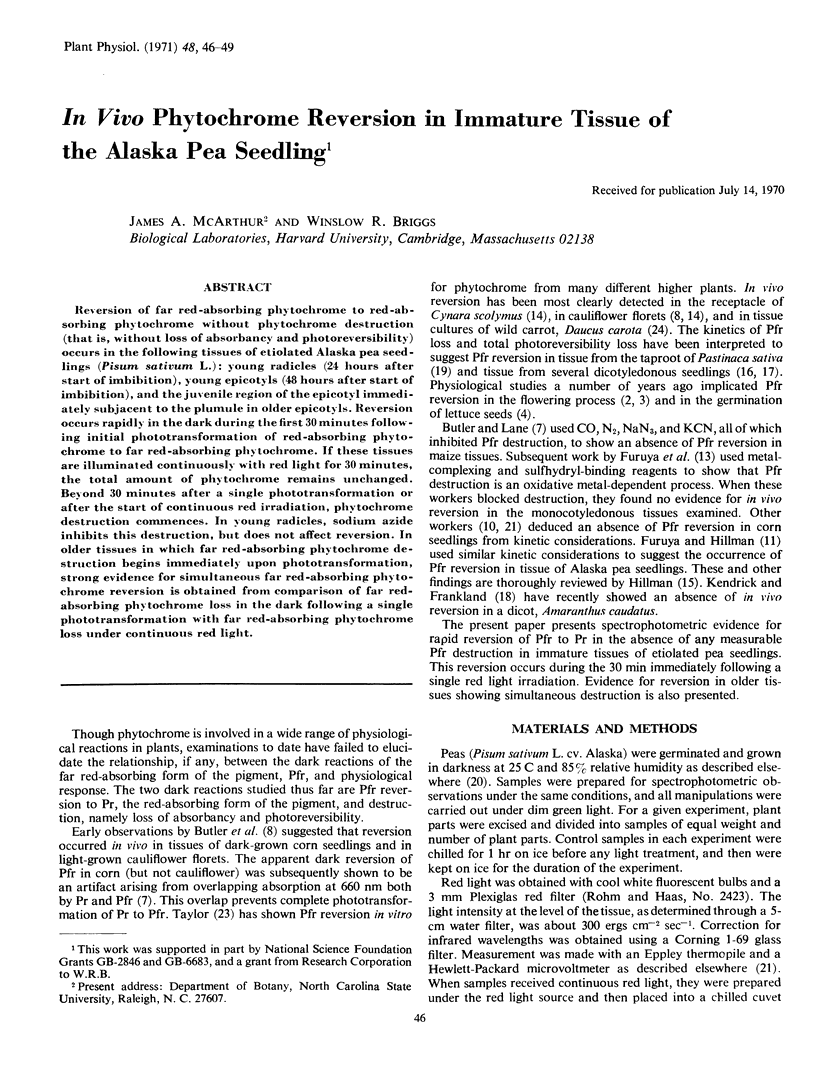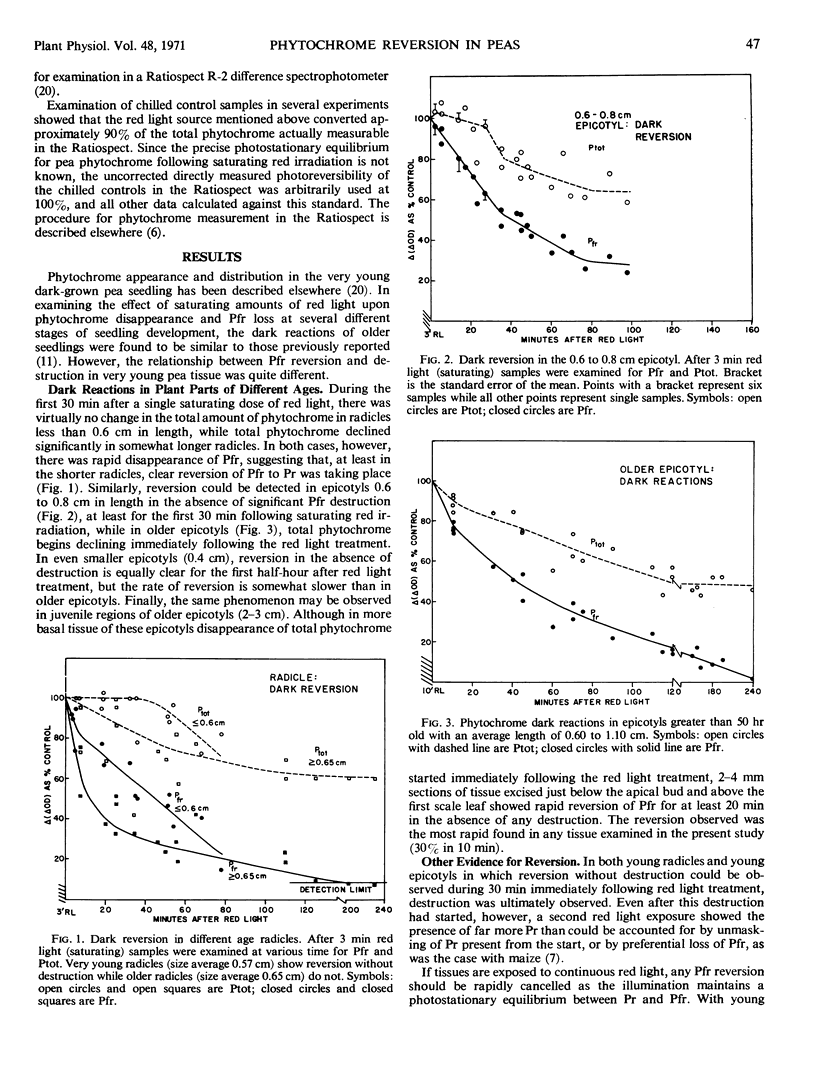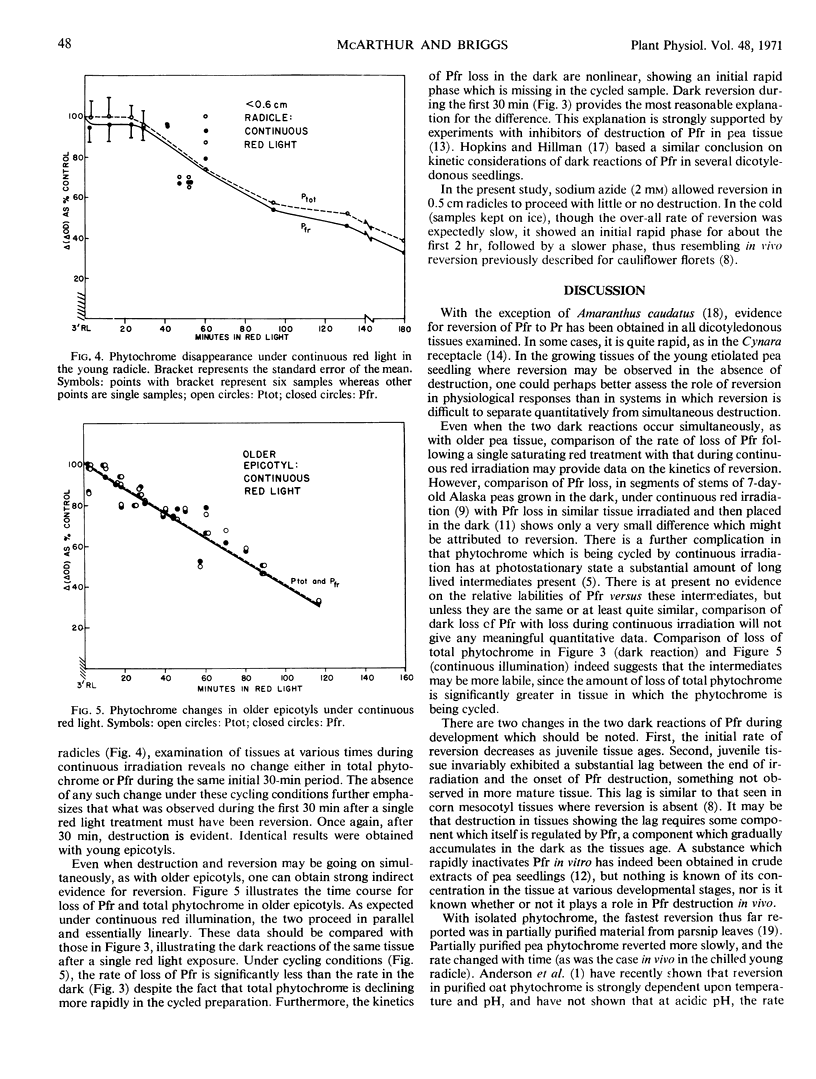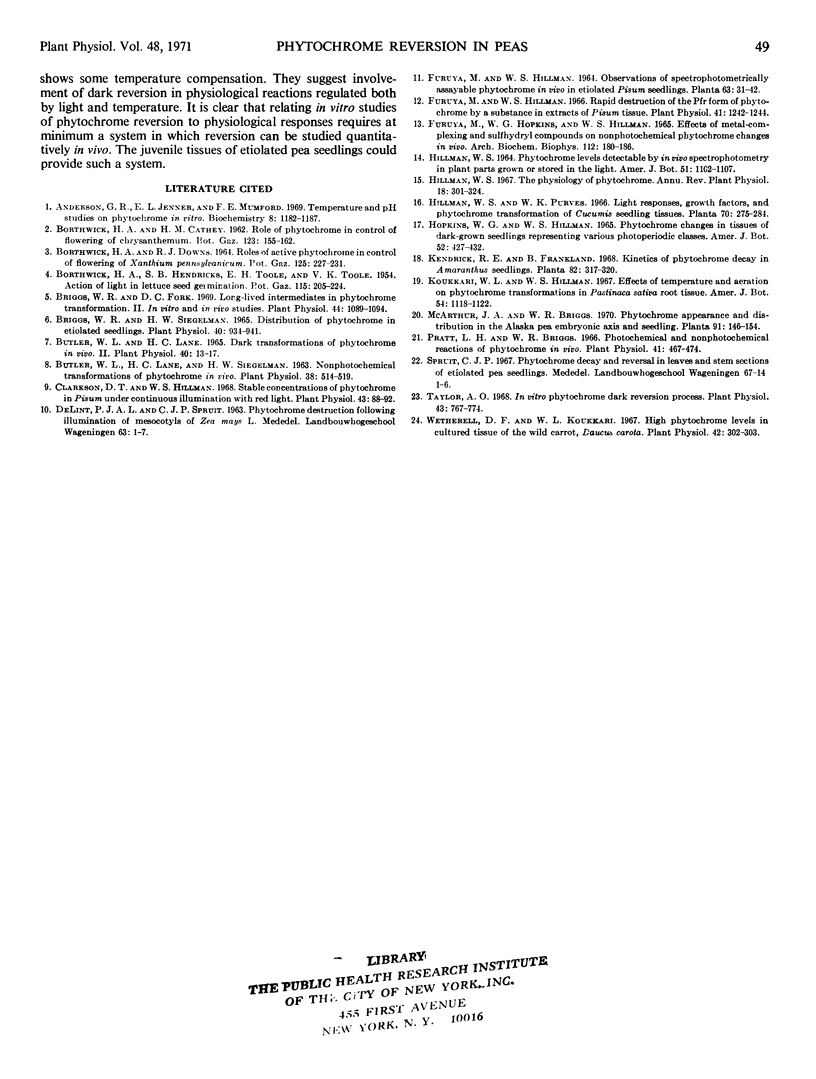Abstract
Reversion of far red-absorbing phytochrome to red-absorbing phytochrome without phytochrome destruction (that is, without loss of absorbancy and photoreversibility) occurs in the following tissues of etiolated Alaska pea seedlings (Pisum sativum L.): young radicles (24 hours after start of imbibition), young epicotyls (48 hours after start of imbibition), and the juvenile region of the epicotyl immediately subjacent to the plumule in older epicotyls. Reversion occurs rapidly in the dark during the first 30 minutes following initial phototransformation of red-absorbing phytochrome to far red-absorbing phytochrome. If these tissues are illuminated continuously with red light for 30 minutes, the total amount of phytochrome remains unchanged. Beyond 30 minutes after a single phototransformation or after the start of continuous red irradiation, phytochrome destruction commences. In young radicles, sodium azide inhibits this destruction, but does not affect reversion. In older tissues in which far red-absorbing phytochrome destruction begins immediately upon phototransformation, strong evidence for simultaneous far red-absorbing phytochrome reversion is obtained from comparison of far red-absorbing phytochrome loss in the dark following a single phototransformation with far red-absorbing phytochrome loss under continuous red light.
Full text
PDF



Selected References
These references are in PubMed. This may not be the complete list of references from this article.
- Anderson G. R., Jenner E. L., Mumford F. E. Temperature and pH studies on phytochrome in vitro. Biochemistry. 1969 Mar;8(3):1182–1187. doi: 10.1021/bi00831a052. [DOI] [PubMed] [Google Scholar]
- Briggs W. R. Long-lived Intermediates in Phytochrome Transformation II: In Vitro and In Vivo Studies. Plant Physiol. 1969 Aug;44(8):1089–1094. doi: 10.1104/pp.44.8.1089. [DOI] [PMC free article] [PubMed] [Google Scholar]
- Briggs W. R., Siegelman H. W. Distribution of Phytochrome in Etiolated Seedlings. Plant Physiol. 1965 Sep;40(5):934–941. doi: 10.1104/pp.40.5.934. [DOI] [PMC free article] [PubMed] [Google Scholar]
- Butler W. L., Lane H. C. Dark Transformations of Phytochrome in vivo. II. Plant Physiol. 1965 Jan;40(1):13–17. doi: 10.1104/pp.40.1.13. [DOI] [PMC free article] [PubMed] [Google Scholar]
- Butler W. L., Lane H. C., Siegelman H. W. Nonphotochemical Transformations of Phytochrome in Vivo. Plant Physiol. 1963 Sep;38(5):514–519. doi: 10.1104/pp.38.5.514. [DOI] [PMC free article] [PubMed] [Google Scholar]
- Clarkson D. T., Hillman W. S. Stable concentrations of phytochrome in pisum under continuous illumination with red light. Plant Physiol. 1968 Jan;43(1):88–92. doi: 10.1104/pp.43.1.88. [DOI] [PMC free article] [PubMed] [Google Scholar]
- Furuya M., Hillman W. S. Rapid Destruction of the P(FS) Form of Phytochrome by a Substance in Extracts of Pisum Tissue. Plant Physiol. 1966 Sep;41(7):1242–1244. doi: 10.1104/pp.41.7.1242. [DOI] [PMC free article] [PubMed] [Google Scholar]
- Furuya M., Hopkins W. G., Hillman W. S. Effects of metal-complexing and sulfhydryl compounds on nonphotochemical phytochrome changes in vivo. Arch Biochem Biophys. 1965 Oct;112(1):180–186. doi: 10.1016/0003-9861(65)90026-3. [DOI] [PubMed] [Google Scholar]
- Pratt L. H., Briggs W. R. Photochemical and Nonphotochemical Reactions of Phytochrome in vivo. Plant Physiol. 1966 Mar;41(3):467–474. doi: 10.1104/pp.41.3.467. [DOI] [PMC free article] [PubMed] [Google Scholar]
- Taylor A. O. In vitro phytochrome dark reversion process. Plant Physiol. 1968 May;43(5):767–774. doi: 10.1104/pp.43.5.767. [DOI] [PMC free article] [PubMed] [Google Scholar]
- Wetherell D. F., Koukkari W. L. High Phytochrome Levels in Cultured Tissue of the Wild Carrot, Daucus carota. Plant Physiol. 1967 Feb;42(2):302–303. doi: 10.1104/pp.42.2.302. [DOI] [PMC free article] [PubMed] [Google Scholar]


